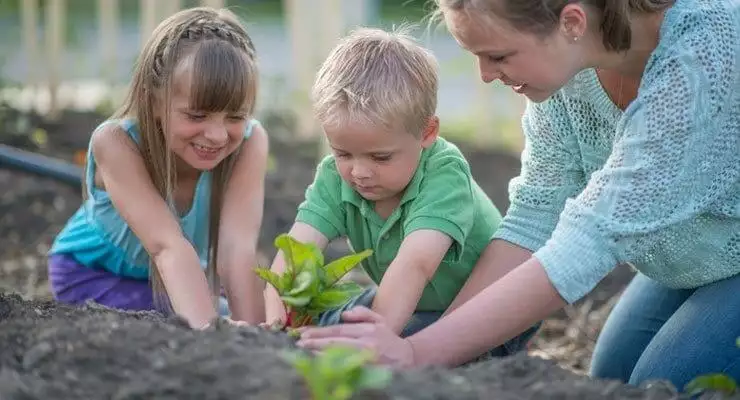Fresh vegetables straight from your garden taste better than store-purchased produce and they retain more nutrients going straight from the vine to your plate. A backyard vegetable garden also benefits your food budget because you won’t need to purchase as much from the supermarket. The garden makes an entertaining and educational family activity from spring through fall.
Planning
Planning your garden before you plant the first seed increases your chances of success. A garden site is the first decision. Direct sunlight is key for the best growth of vegetables. The University of Illinois Extension recommends a location with at least six to eight hours of sunlight a day. You also want to avoid other plants, such as trees or bushes, which will compete for nutrients in the soil. You can plant the vegetables directly in the ground, make raised beds or use pots for a container garden.
The vegetable selection is the other major decision before planting. Choose vegetables that your family enjoys. Also consider the cost of the vegetables at the store. Growing the vegetables that cost more at the store will save you money on your grocery bill.
Tools
Many tools needed for a successful garden might be things you already have around the home. A garden hoe helps you break up dirt clumps and makes weeding easier. Rakes work well for preparing the soil for planting. Digging holes for the seeds or plants is done with a spade. A garden trowel works well for digging smaller holes. Labels for each row of vegetables helps you identify the produce, especially when buds are first coming through the soil. If you want straight rows, a string line works well.
Planting
Digging up the soil to at least 6 inches prepares the dirt for planting. The University of Illinois Extension recommends adding 2 to 4 inches of organic matter, which you then integrate into the existing soil, for a better garden base. Add fertilizer to the soil to provide nutrients for the plants.
Vegetables have different growing requirements in terms of spacing and depth. Read the seed package or starter plant tag before you begin planting to ensure that your plants have enough room to grow. They start small, but many vegetable plants grow tall and wide.
Maintenance
Once the vegetables are planted, they need regular maintenance to continue growing properly. The vegetables need regular watering and weeding to keep them healthy. Check the plants daily for ripe vegetables, weeds and the need for water. The kids can help with the watering and weeding with supervision to avoid over-watering and “weeding” the actual vegetable plants.
Considerations
If space is limited, you can grow your garden with vegetables that vine, such as like peas, squash, cucumbers and pole beans. Add a trellis or pole for the plants to grow up to save space on the ground. Staggering your planting or choosing varieties of vegetables that mature at different times gives you a wider harvest window. For example, you might start one section of your corn crop and then wait a few weeks to start another section. You reduce the risk of food going to waste if everything comes ripe at once.
Interested in a herb garden. Check out the video below:






